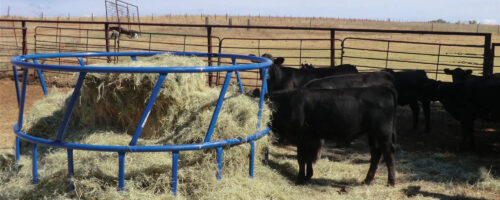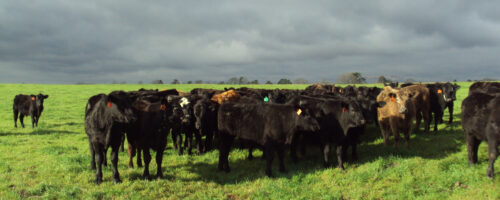Drought conditions cause extreme stress on pecan trees. Water is critical for tree survival and nut production, and is involved in all processes within the trees, ranging from nutrient transportation to the production of leaves and fruit. It is important for producers to understand the effects of drought and how pecan trees cope with the stress it brings.
One of the first obvious signs of drought is leaf yellowing, followed by leaf drop. However, by the time this damage is visible, the tree has already been significantly stressed and has activated internal processes to cope with stress. When drought occurs, the root system senses the lack of available water and signals the leaf stomata to lengthen closure periods. Stomata are tiny openings located on the bottoms of the leaves that are responsible for the control of water movement through the tree. When the stomata are open, water is allowed to be pulled from the roots through the tree; when closed, the movement of water decreases. Most plants begin closing their stomata when the temperature reaches 95 degrees Fahrenheit. In pecans, the stomata will remain open until the temperature approaches 106 degrees Fahrenheit.
Next, the tree will signal for increased root growth in order to explore for additional moisture in the soil. This root production uses valuable stored energy, which causes additional damage to the tree causing production of smaller leaves and nuts. If additional moisture is not located by these roots, the tree will sever the roots and protect the remaining roots from water loss. In most plants, the leaves will then wilt for water conservation. However, pecan leaves are too thick and rigid to wilt, so leaves will start yellowing, followed by drop. After the leaves are lost, producers may not be able to see further damage until death occurs, which may take two to five years.
Pecan trees are survivors and will continue to fight for moisture during a drought. Some pecan trees will go into early dormancy to conserve energy for the following year. A healthy tree will go into dormancy by completely shutting down. An unhealthy tree that does not have adequate stored energy will struggle to increase its stored energy instead of shutting down, which can lead to sudden death.
Unfortunately, the tree will feel the effects of drought for several years. Damage and death by insects and pathogens will increase on trees that have been stressed by drought. Drought-stressed trees may also exhibit low production for two to five years while the root system is reestablishing itself.
Several strategies are available to help minimize drought stress. One strategy is to improve soil moisture around the trees. This can be achieved through proper irrigation. However, irrigation is not always available or affordable. If irrigation is not an option, moisture can be conserved by decreasing competition through the elimination of grass and weeds around the trees. Competition can be decreased by mulching around the trees, removing undesired trees and/or maintaining proper tree spacing. Remember that stressed trees can use the same amount of water as a healthy tree. Therefore, removal of trees that are severely stressed or damaged will help conserve water for the remaining trees.
Producers should not be surprised to see additional tree losses over the next few years even if we get adequate moisture. Severely stressed trees may require time to exhibit signs of death.



Comment